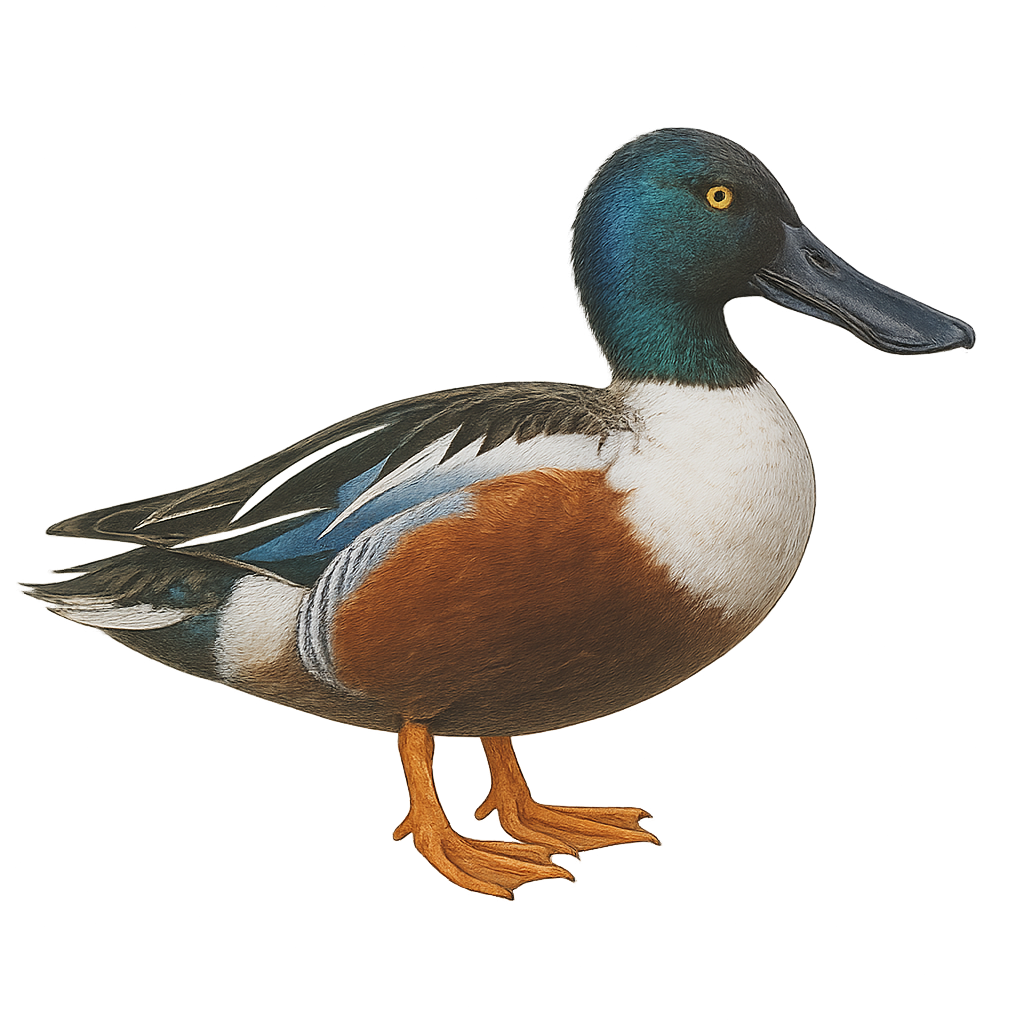Observe and photograph a species in its natural habitat
Learn where and when to observe a species in the wild, how to recognize it in the field, and what habitats it lives in. Get photography tips adapted to its behavior and capture stunning images without disturbing the animal. For full details, open the complete profile in the WildlifePhotographer app.
Northern Shoveler
Scientific name: Spatula clypeata

IUCN Status: Least Concern
Family: ANATIDAE
Group: Birds
Shyness: Shy
Safe distance: 30 m
Breeding season / Courtship: 15.04-15.06
Gestation: 21 à 23 jours
Births: 15.05-15.07
Habitat:
Marshes, ponds, floodplain meadows rich in aquatic vegetation
Description:
The Northern Shoveler is a medium-sized dabbling duck, measuring between 44 and 56 cm in length with a wingspan of 70 to 85 cm. The breeding male features an iridescent dark green head, white chest, chestnut flanks, and a large spatula-shaped bill. The female has mottled brown plumage and a similarly shaped bill. This species inhabits shallow wetlands, such as marshes, ponds, and floodplain meadows rich in aquatic vegetation. It feeds by filtering water with its specialized bill, consuming primarily plankton, aquatic insects, crustaceans, mollusks, and seeds. Migratory, the Northern Shoveler breeds in Europe and Asia, wintering in Africa, India, and Southeast Asia. Although listed as Least Concern by the IUCN, it is sensitive to wetland degradation.
Recommended lens:
>=400 mm
Photography tips:
Use a telephoto lens to photograph the Northern Shoveler, especially during its discreet movements in wetlands. Favor soft morning or evening light to capture the details of its plumage. Be patient and discreet to observe its natural behaviors.
Ready to take action?
Choose your platform and start your free trial today



